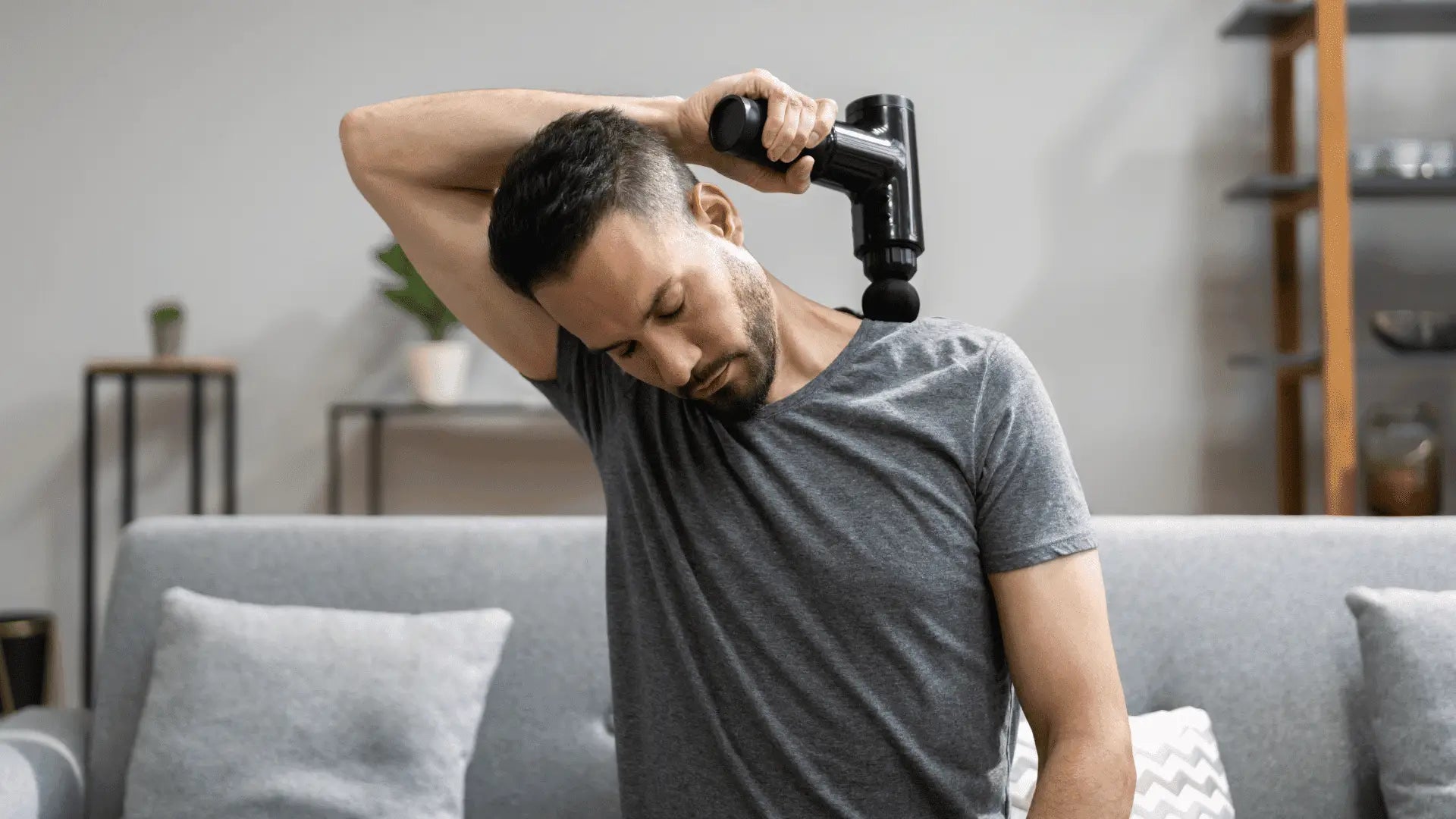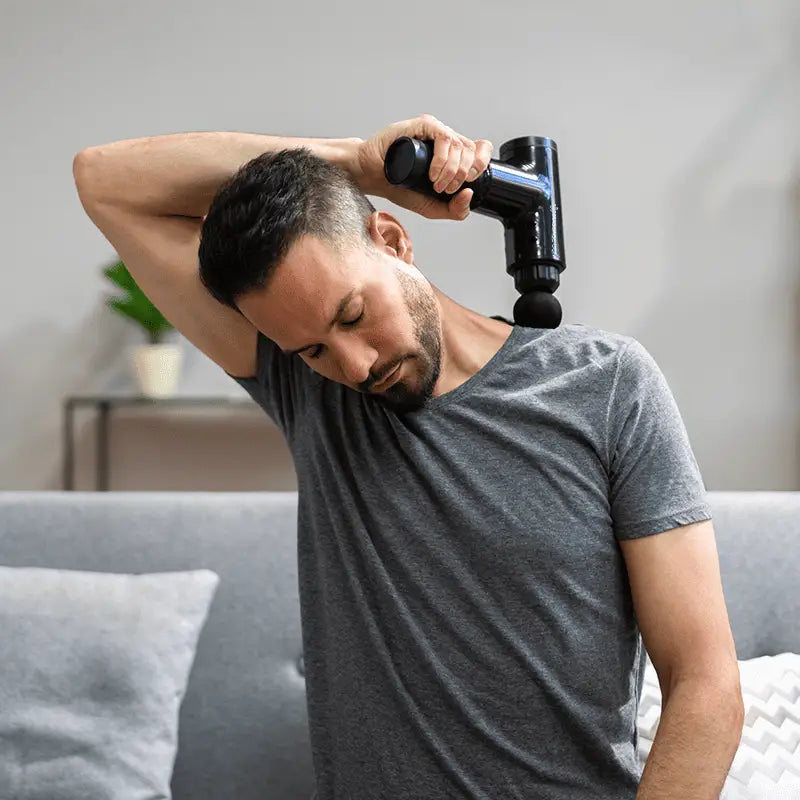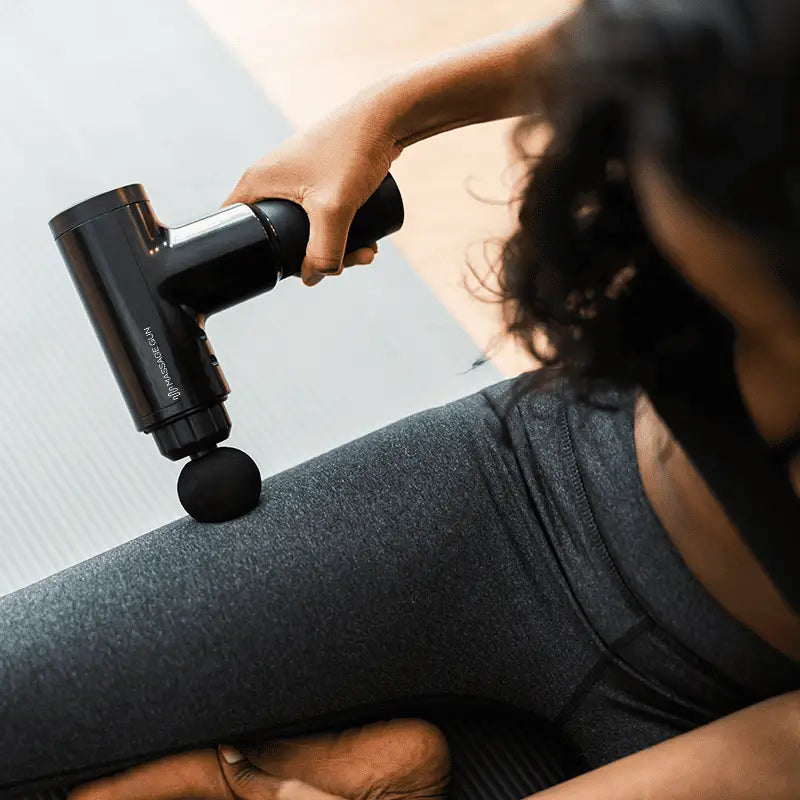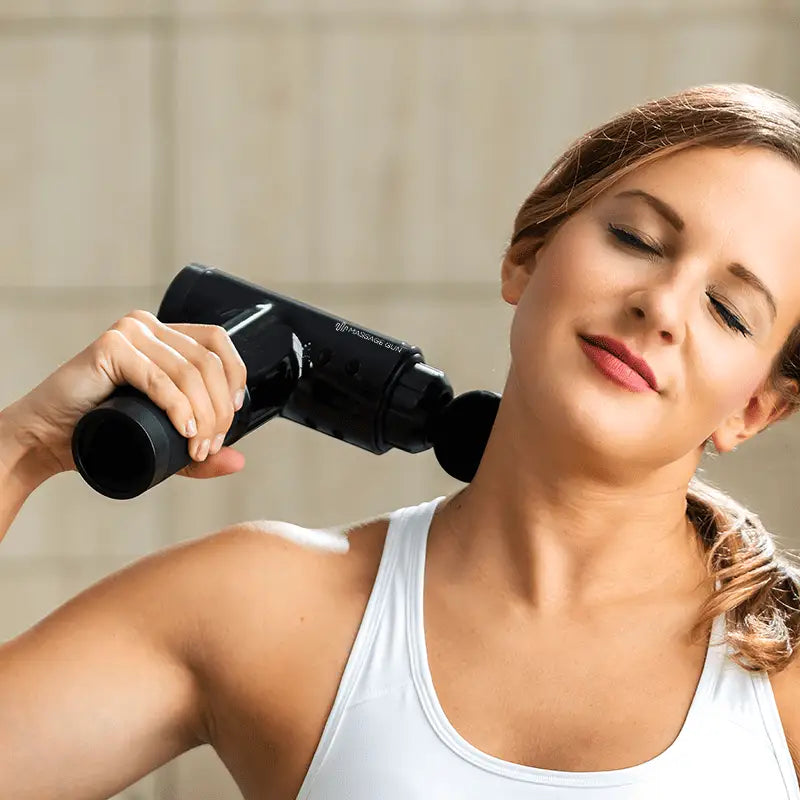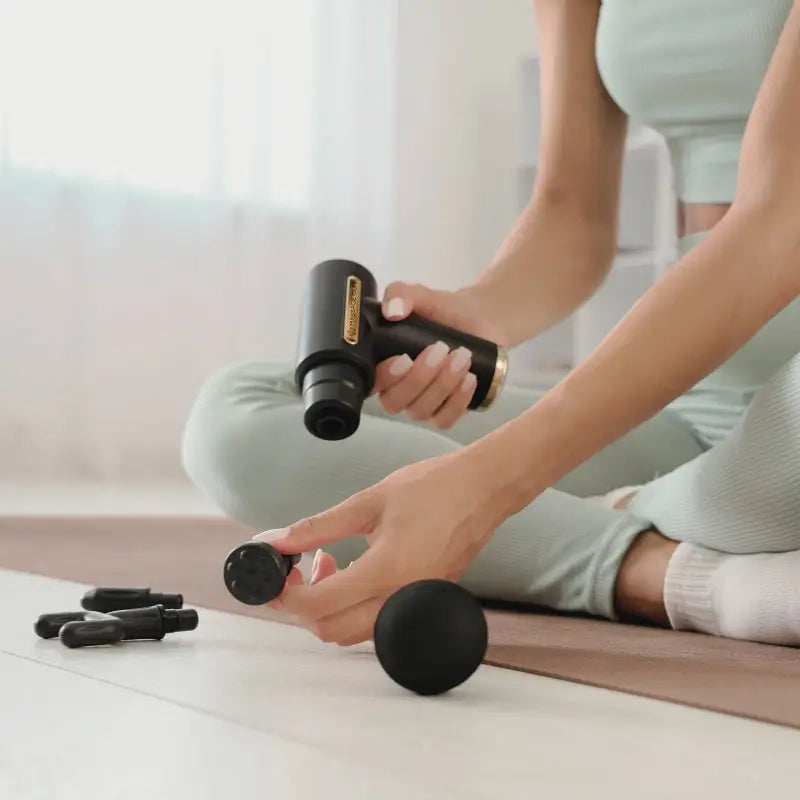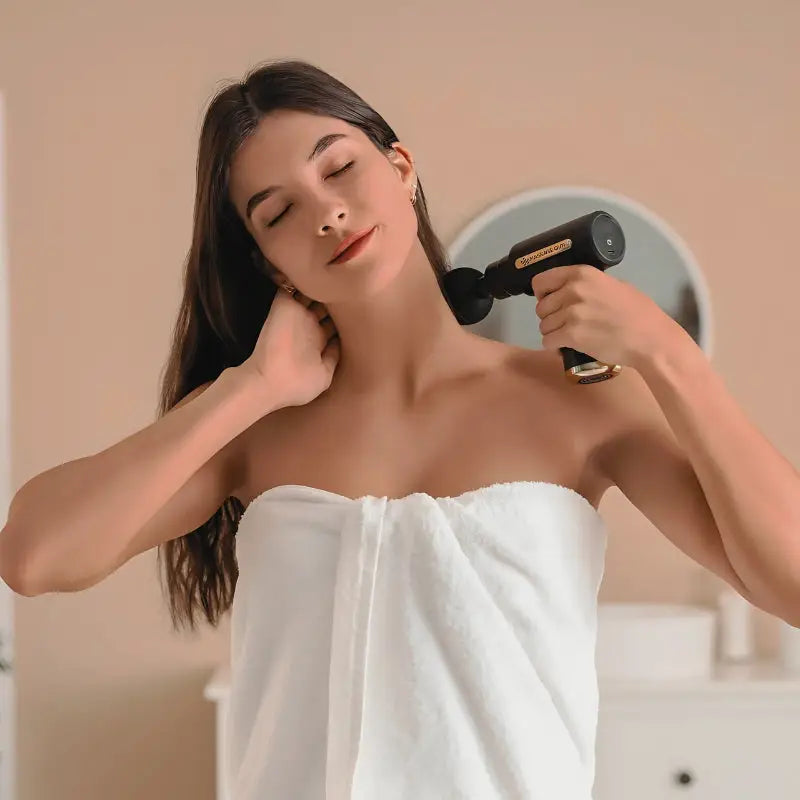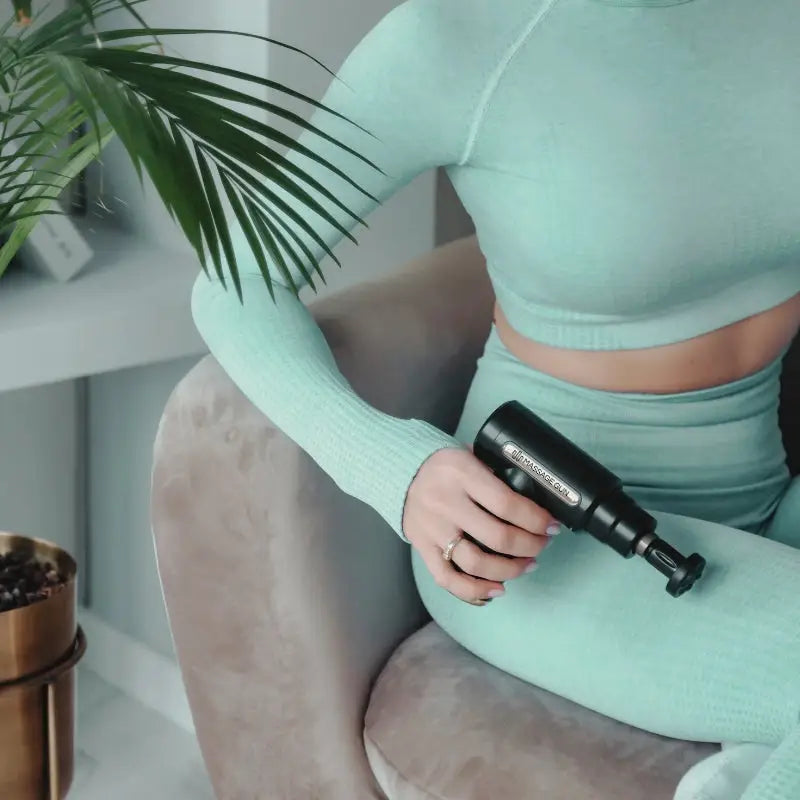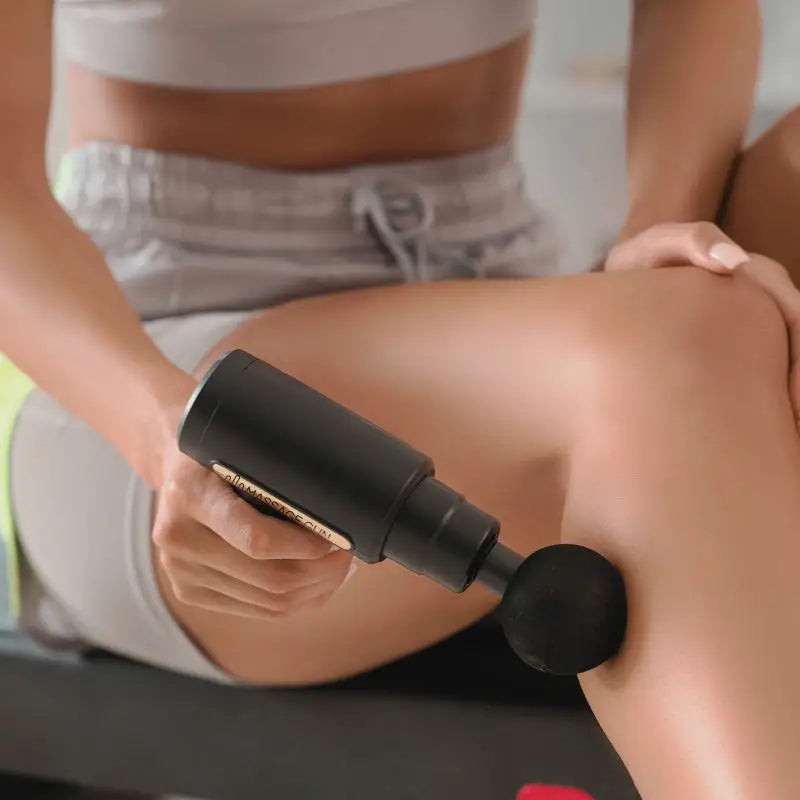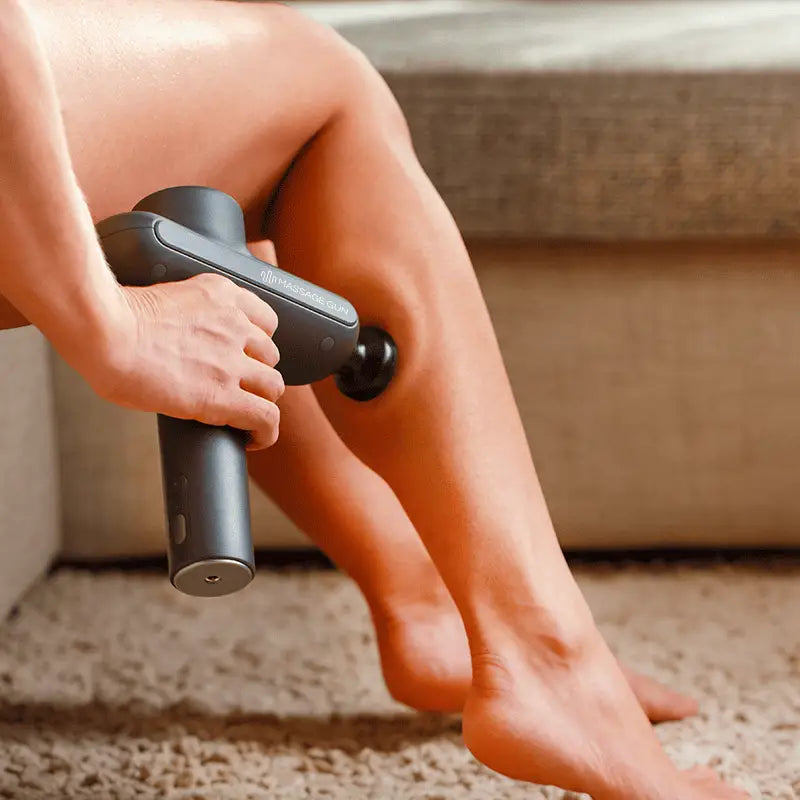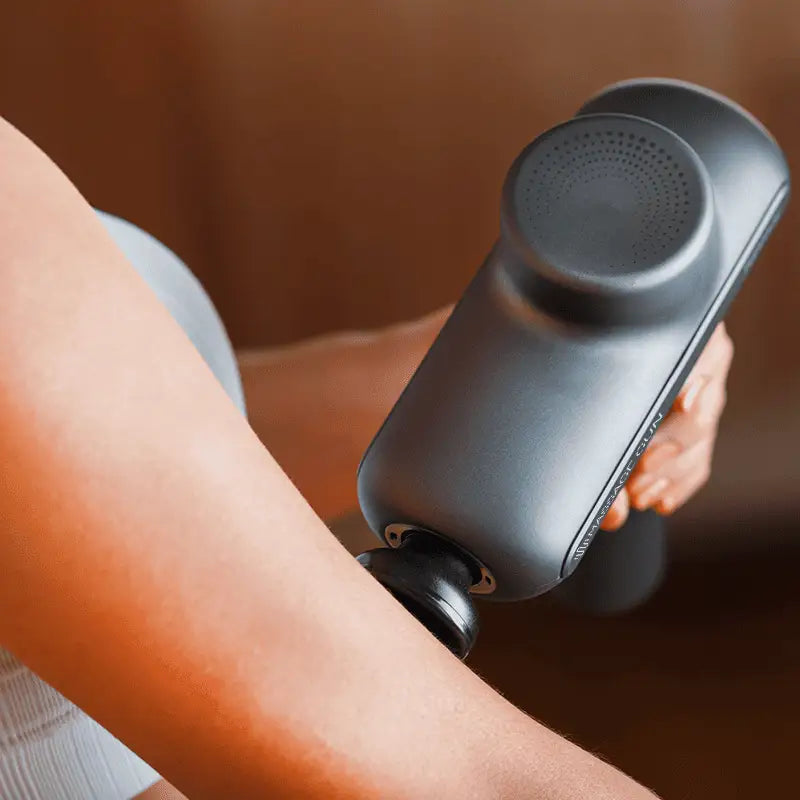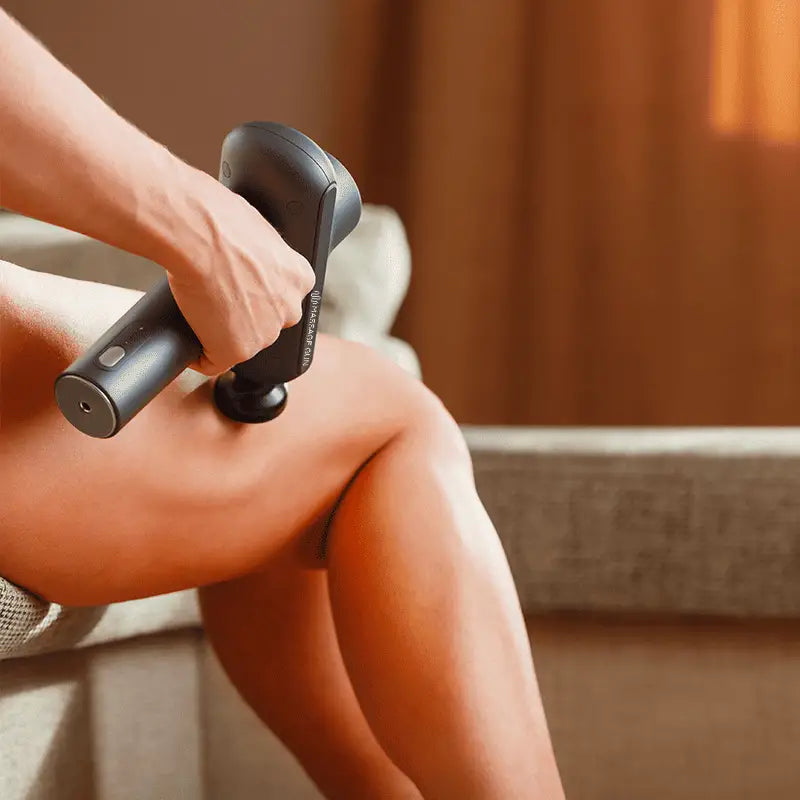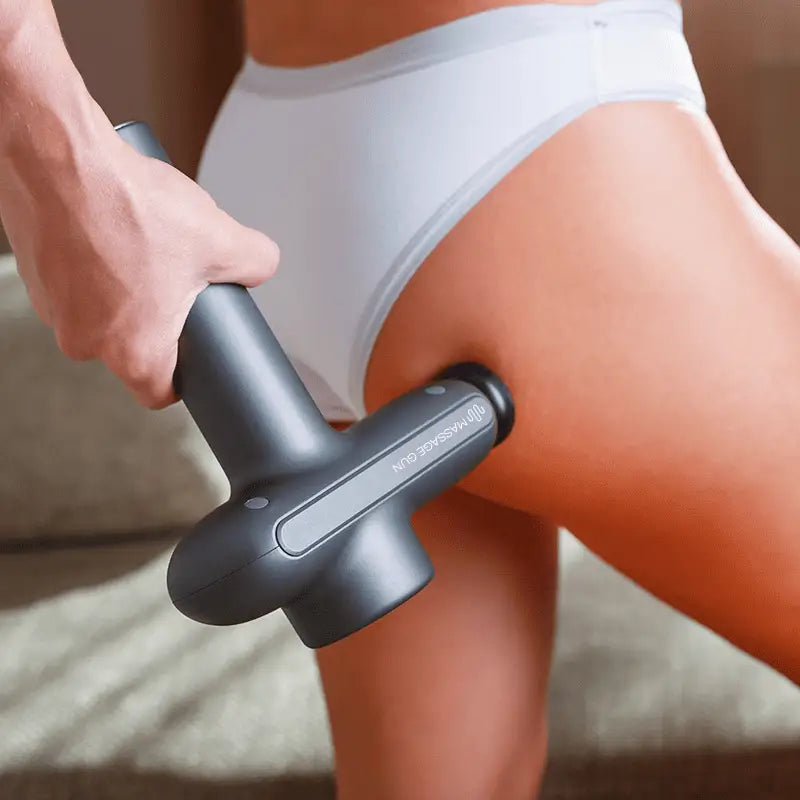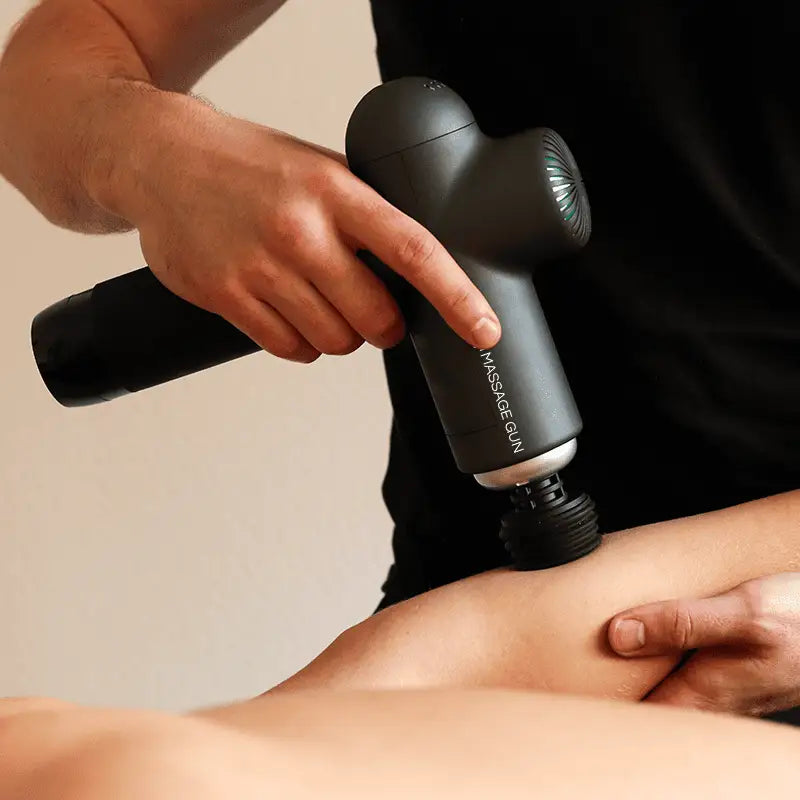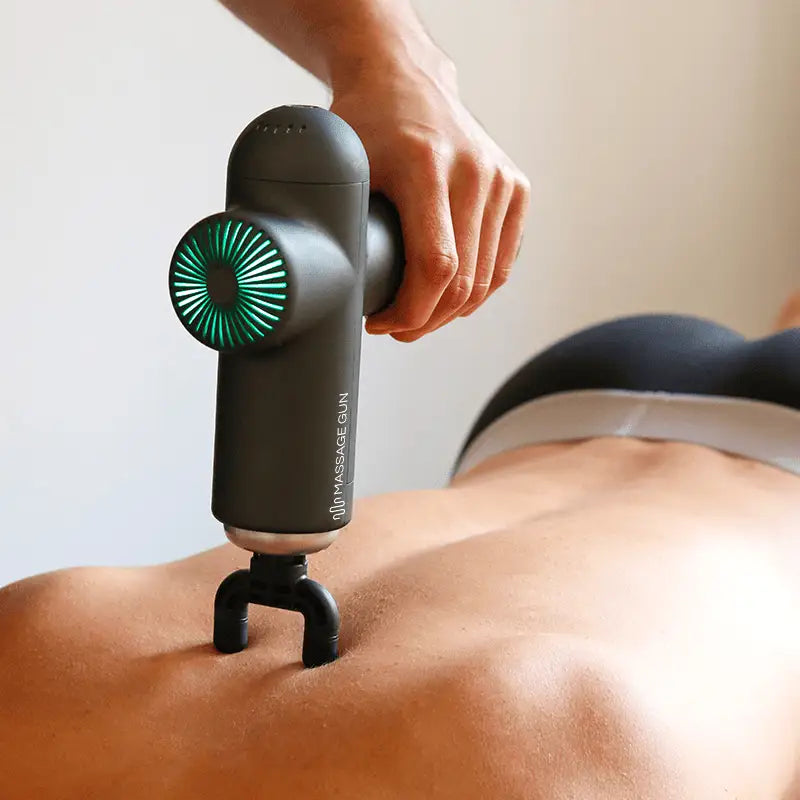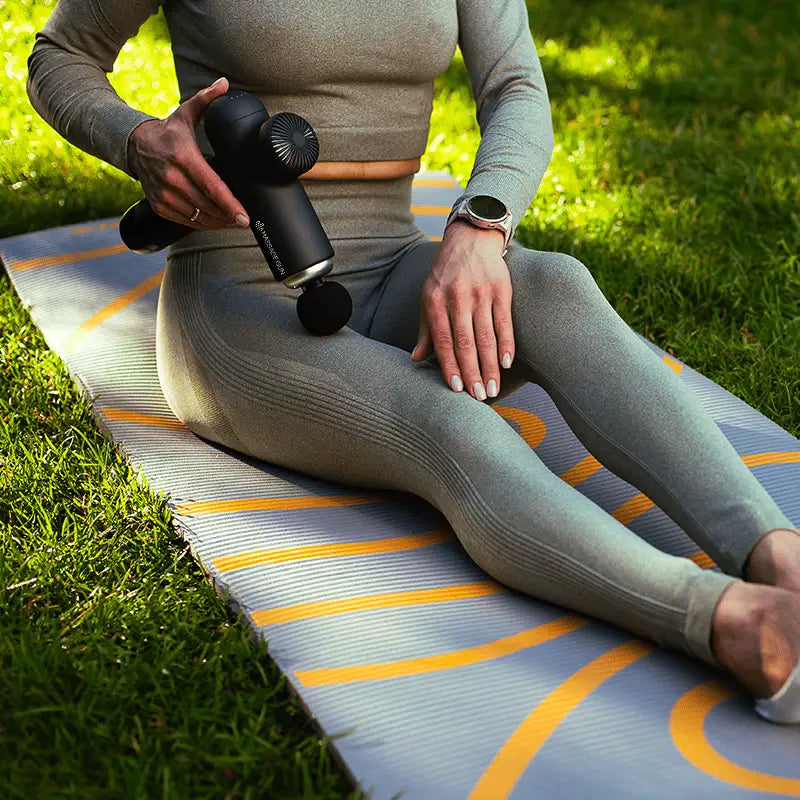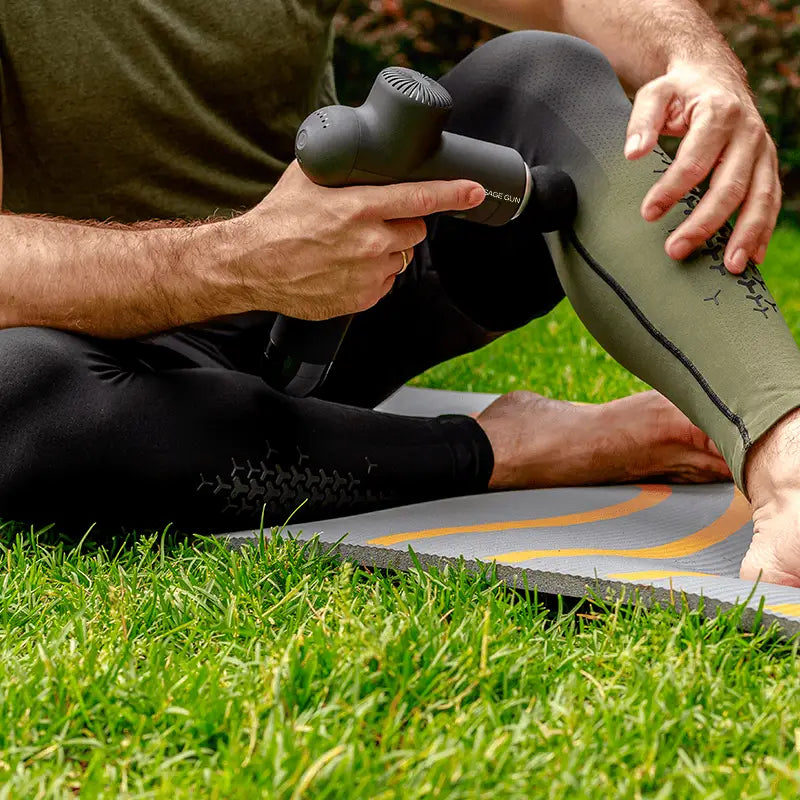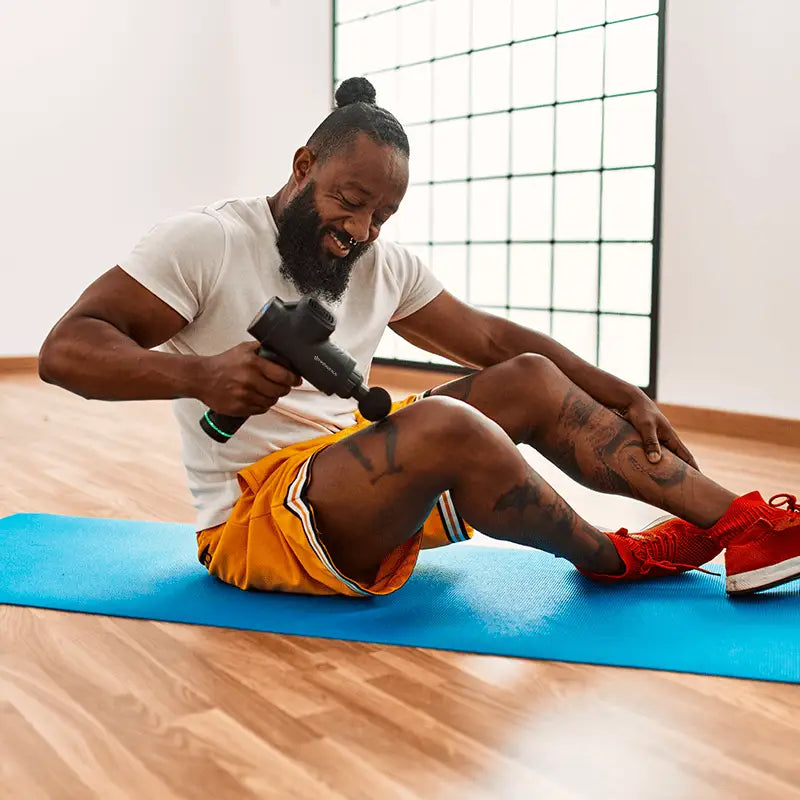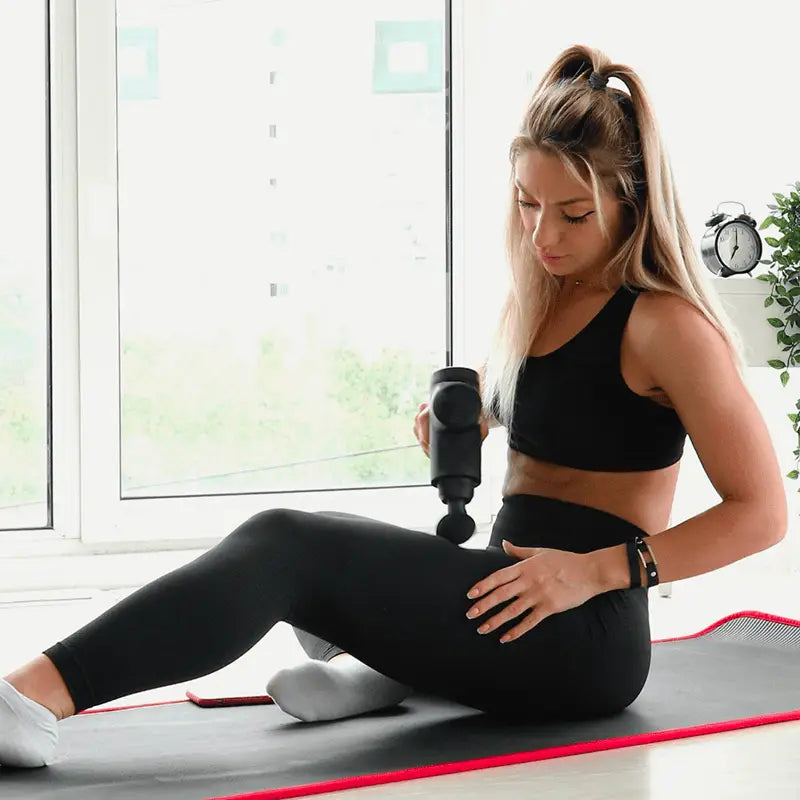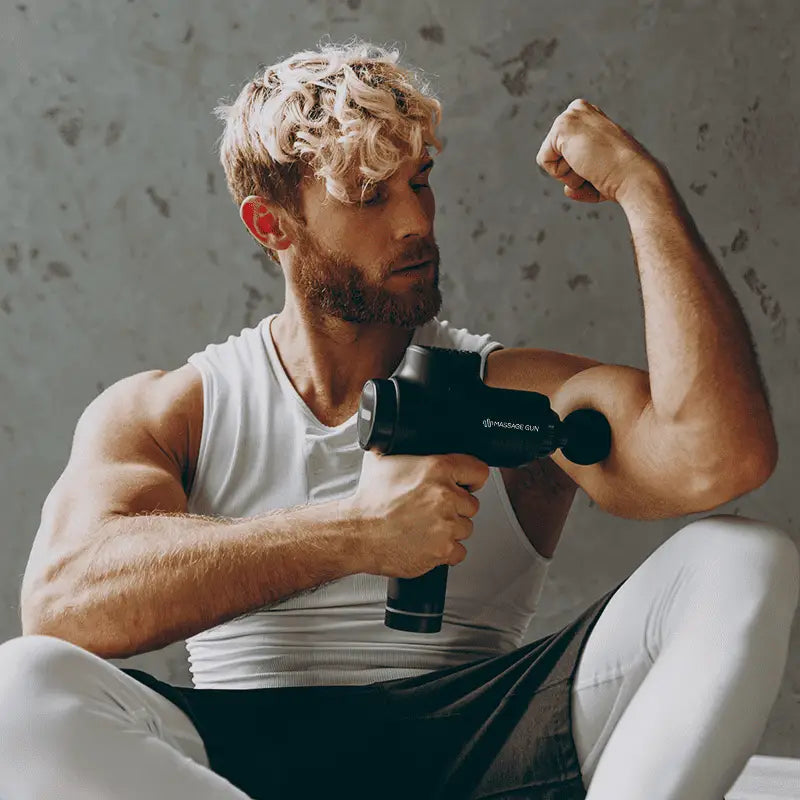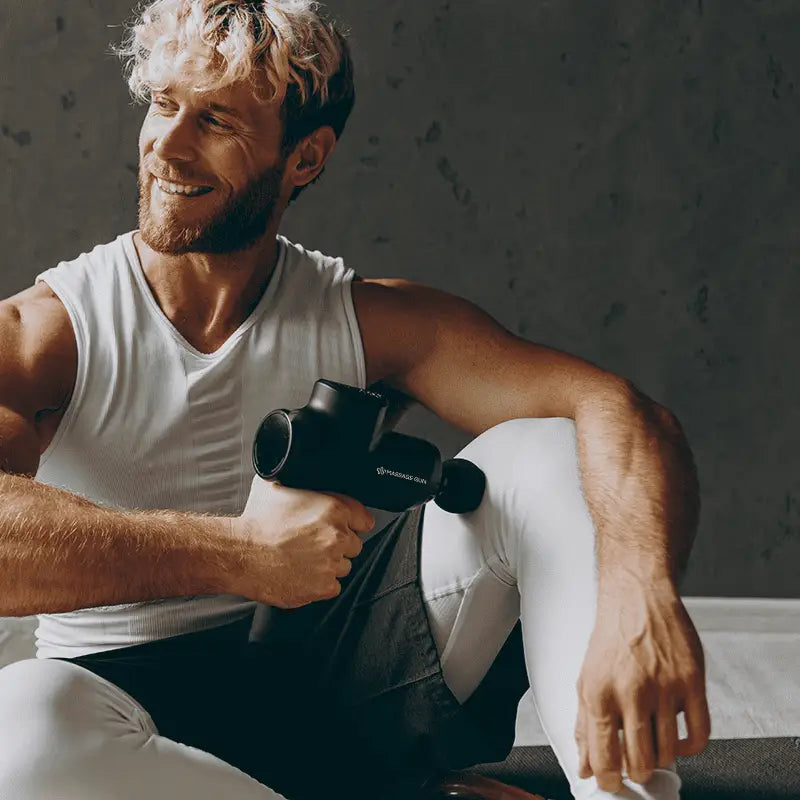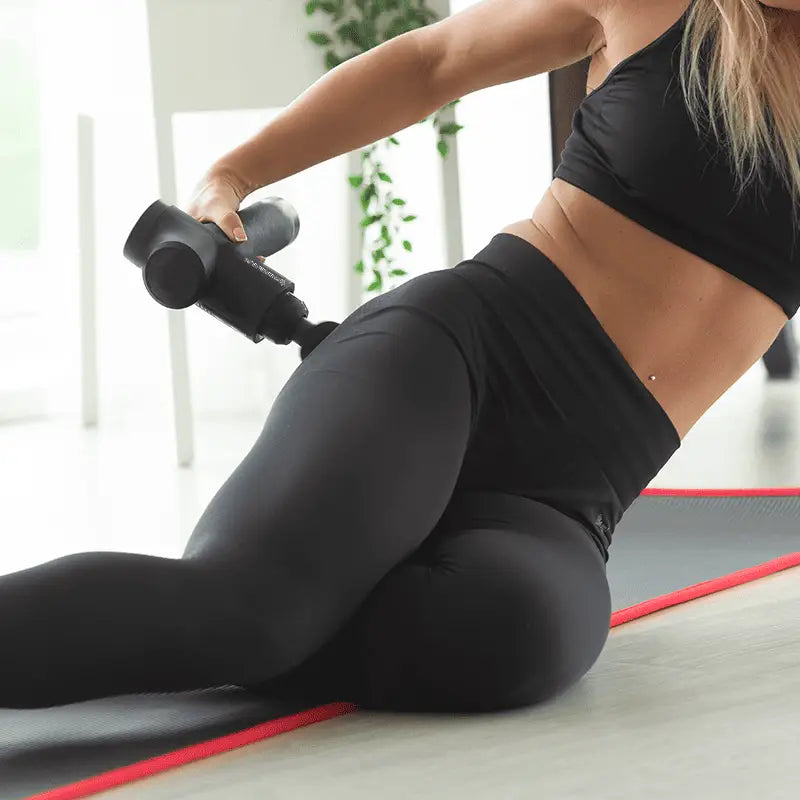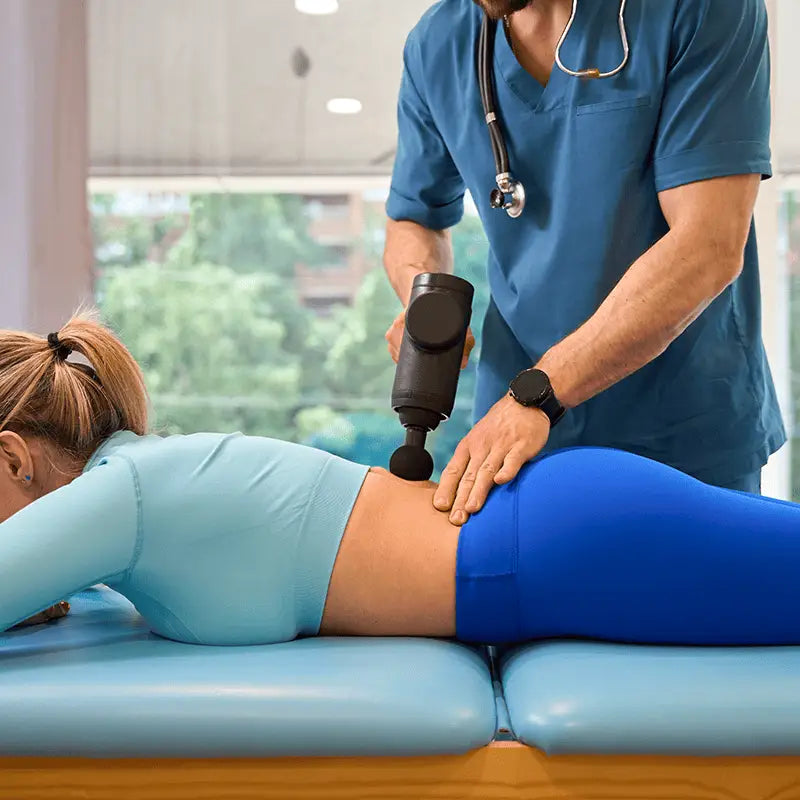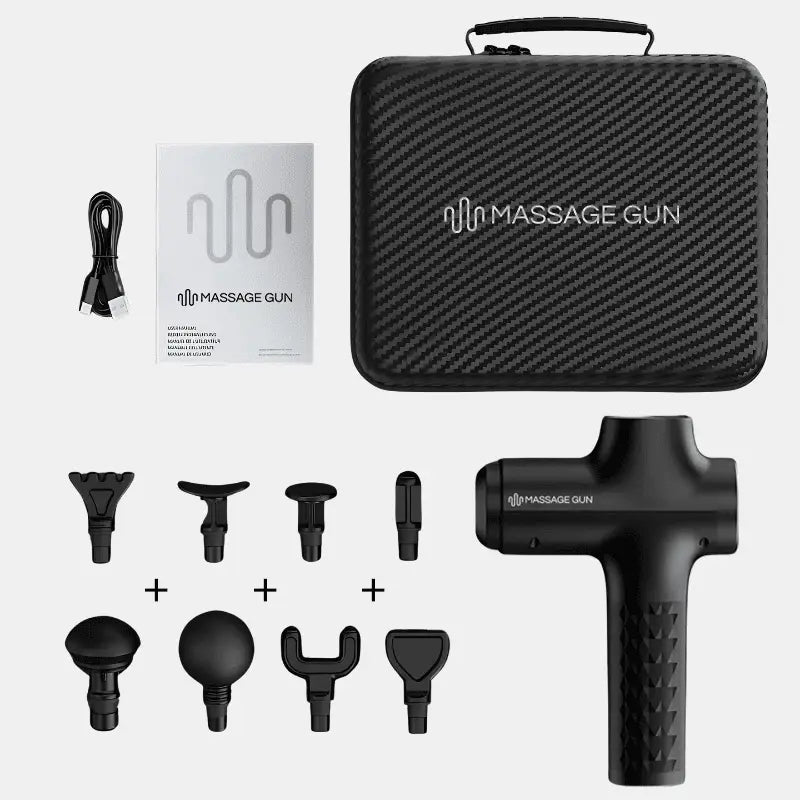Massage guns have surged in popularity among fitness enthusiasts and athletes for their potential to enhance workout recovery and alleviate muscle discomfort.
These handheld devices, often called percussion massage guns, use rapid, targeted vibrations to treat tight muscles and improve overall muscle health. This article provides a thorough review, addressing whether massage guns actually work by examining scientific evidence, expert opinions, and user experiences.
With a focus on the benefits, limitations, and safe usage, we aim to help you make an informed decision about adding a massage gun to your recovery toolkit.
Understanding percussive therapy
What is percussive therapy?
Percussive therapy, also known as vibration therapy, involves the use of rapid, concentrated pulses to penetrate deep into muscle fibers. Unlike traditional massage, which uses sustained pressure and rolling motions, percussive therapy delivers quick, repetitive strokes to relieve stiffness and soreness.
This technique enhances blood flow, reduces lactic acid buildup, and improves oxygen delivery to muscles, aiding in faster recovery and better performance.
Visual aids, such as diagrams, will help illustrate how percussive therapy works compared to other muscle recovery methods like foam rolling and static stretching.
Benefits of using massage guns
Muscle recovery and soreness reduction
Massage guns are touted for their ability to speed up muscle recovery and reduce delayed onset muscle soreness (DOMS) after intense workouts. The percussive action increases blood circulation, facilitating the delivery of oxygen and nutrients to tired muscles while flushing out metabolic waste products like lactic acid.
This helps reduce muscle fatigue and soreness, allowing you to feel better and perform at your best during subsequent workouts. Scientific studies and systematic reviews have demonstrated the efficacy of percussive therapy in enhancing muscle recovery.
Flexibility and range of motion
Regular use of massage guns can significantly improve flexibility and range of motion (ROM). By breaking down adhesions and scar tissue in the fascia, these devices help muscles relax and lengthen, making it easier to perform activities that require a wide range of motion.
Improved flexibility can lead to better performance in sports and reduce the risk of injuries. This section will include case studies and testimonials from athletes who have experienced positive changes in their flexibility and ROM after incorporating percussive therapy into their routine.
Pain relief and trigger point therapy
Massage guns are highly effective in providing pain relief, especially when targeting trigger points, specific spots in the muscle that cause discomfort and referred pain.
The deep, targeted pressure from the percussion massager helps release these tight knots, offering immediate relief. This section will explain how trigger points develop and how massage guns can be used to treat them effectively.
Limitations and risks of massage guns
Potential drawbacks
Despite their benefits, massage guns also come with potential risks and limitations. Overuse or improper use can lead to injuries such as bruising, muscle damage, or aggravation of existing conditions. It's crucial to learn the correct techniques and limitations of these devices to avoid adverse effects.
Consulting with a healthcare professional before starting any new treatment regimen is always recommended. This section will discuss the potential drawbacks of using massage guns and emphasize the importance of moderation and proper usage.
Contraindications
Certain medical conditions contraindicate the use of massage guns. Individuals with conditions like deep vein thrombosis, varicose veins, or severe osteoporosis should avoid using these devices due to the risk of exacerbating their symptoms.
This section will outline the medical conditions and situations where massage guns should not be used, providing a comprehensive guide for safe usage.
Comparing massage guns to other recovery tools
Foam rollers vs. massage guns
Foam rollers and massage guns are both popular tools for muscle recovery, but they function differently and offer distinct benefits. Foam rollers use body weight to apply pressure, while massage guns deliver targeted percussive therapy.
Traditional massage vs. percussive therapy
Traditional massage and percussive therapy both aim to alleviate muscle tension and promote recovery, but they do so through different techniques. This section will explore the differences between these two methods, including their effectiveness, cost, and accessibility.
We will also discuss scenarios where one method may be more beneficial than the other. Interviews with massage therapists will provide professional insights into the pros and cons of each approach.
Choosing the right massage gun
Key features to consider
When selecting a massage gun, several key features should be considered, such as power, battery life, noise level, and available attachments. The importance of adjustability and ergonomics cannot be overstated, as these factors contribute to the device's overall effectiveness and user comfort.
Top massage guns on the market
With numerous models available, choosing the right massage gun can be overwhelming. This section will review and compare some of the top massage guns on the market, highlighting their features, pros, and cons.
How to use a massage gun safely
Best practices for safe use
Proper use of a massage gun is crucial to avoid injuries and maximize benefits. This section will provide a step-by-step guide on how to use a massage gun safely, including tips for beginners and advanced users.
Frequency and duration of use
Understanding how often and for how long to use a massage gun is essential for achieving the best results. This section will provide guidelines on the recommended frequency and duration of use, balancing it with other recovery methods.
We will discuss how to integrate massage gun therapy into a regular fitness routine without overusing it. Sample usage schedules will be included as images to give readers a clear idea of how to incorporate the device into their regimen effectively.
Conclusion
This section will recap the key points discussed in the article, summarizing the benefits and limitations of massage guns. We will revisit the scientific evidence and expert opinions presented throughout the article to provide a comprehensive overview of their effectiveness.
By synthesizing the information, readers will have a clear understanding of whether massage guns work and if they are a suitable addition to their recovery routine. This summary will help consolidate the knowledge gained from the article, reinforcing the practical applications of using a massage gun.
Frequently asked questions about whether massage guns work
1. Do massage guns work for muscle recovery?
Yes, massage guns are effective for muscle recovery. They use percussion therapy to deliver rapid bursts of pressure to muscle tissues, improving blood flow and reducing muscular tightness and stress.
This increased circulation helps remove lactic acid buildup and delivers more oxygen to the muscles, aiding in quicker recovery. As part of a systematic review and meta-analysis, science supports the use of these devices for enhancing muscle recovery and reducing soreness.
The acute effects of percussion therapy can significantly reduce muscle fatigue, making it easier to stay fit and active day after day. Adding a massage gun to your rehabilitation routine can help alleviate soreness from activities like biking, running, or any sport, ultimately improving your quality of life.
2. How do massage guns relieve muscle pain?
Massage guns relieve muscle pain by targeting specific areas of tightness and soreness with deep, targeted pressure. This percussive action helps break down adhesions and scar tissue in the fascia, a type of soft tissue surrounding muscles, which in turn reduces stiffness and improves range of motion (ROM).
Research published in the international journal of sports medicine shows that massage guns can effectively treat muscle pain and improve musculoskeletal health.
For example, using a massage gun on the neck and shoulders can alleviate pain caused by stress and poor posture, which many people experience due to sedentary lifestyles. With proper use, massage guns can support pain management and enhance overall muscle health.
3. Can massage guns help with flexibility and range of motion?
Yes, regular use of massage guns can improve flexibility and range of motion (ROM). By relaxing tight muscles and breaking down scar tissue, these devices help muscles stretch and lengthen, allowing for greater movement.
This is especially beneficial for athletes and active individuals looking to enhance their performance. Studies in the field of physical therapy-based medicine indicate that massage guns can effectively increase ROM and muscle strength, reducing the risk of injury.
Visual aids and instructional videos available online can provide tips on using massage guns for flexibility, making it easier to incorporate them into your daily routine. The benefits of improved flexibility and ROM are substantial, helping you prepare better for physical activities and recover more efficiently.
4. Are there any risks associated with using massage guns?
While massage guns offer numerous benefits, improper use or overuse can lead to injuries such as bruising or muscle damage. It's crucial to follow the manufacturer's guidelines and avoid using the device on bony areas or directly on the spine.
People with certain medical conditions, such as deep vein thrombosis, severe osteoporosis, or acute injuries, should consult with a healthcare professional before using a massage gun.
Additionally, those taking prescription medications for musculoskeletal issues should check with their doctor to ensure the device is safe for use. Adhering to these precautions can minimize risks and enhance the safety of using massage guns for muscle recovery.
5. How often should you use a massage gun?
The frequency of massage gun use depends on individual needs and activity levels. For general muscle maintenance, using a massage gun for 10-15 minutes, 2-3 times per week, is sufficient.
However, for those engaging in intense physical activities, using the device post-workout can help with quicker recovery. It's important to listen to your body and avoid overuse to prevent potential injuries.
Online resources and expert guidelines suggest starting with shorter sessions and gradually increasing the duration as your body adapts. By following these tips, you can effectively incorporate a massage gun into your routine without risking overuse or injury.
6. Can massage guns replace traditional massage therapy?
Massage guns can complement traditional massage therapy but may not fully replace it. While they offer targeted, convenient relief for muscle soreness and stiffness, they lack the personalized touch and expertise of a professional massage therapist.
Traditional massage can address deeper issues within the soft tissue and provide a more comprehensive treatment. Combining both methods can provide a balanced approach to muscle care, offering the benefits of percussive massage treatment alongside the holistic benefits of manual therapy.
For those looking to enhance their muscle recovery and overall health, integrating both options into their wellness routine is advisable.
7. What features should you look for in a massage gun?
When choosing a massage gun, several key features should be considered, such as power, battery life, noise level, and available attachments. High-quality devices offer adjustable speed settings and ergonomic designs for comfortable use.
Attachments designed for different muscle groups can provide more effective treatment. Checking online reviews and product specifications can help you find a massage gun that fits your needs.
Additionally, consider the device's ease of use and whether it comes with a reliable warranty or support policy. Making an informed purchase ensures you get the most out of your investment in a massage gun.
8. How do massage guns compare to foam rollers?
Massage guns and foam rollers both serve purposes in muscle recovery, but they operate differently. Foam rollers use body weight to apply broad pressure, which can help with general muscle maintenance and myofascial release.
In contrast, massage guns provide focused percussive therapy that penetrates deeper into muscle fibers, offering more targeted relief. Both tools can be beneficial, but massage guns offer greater precision and control, making them a better option for addressing specific sore spots and tight areas.
Combining the use of both tools can provide a comprehensive approach to muscle care, maximizing the benefits of each method.
9. Can massage guns help reduce delayed onset muscle soreness (DOMS)?
Yes, massage guns can help reduce delayed onset muscle soreness (DOMS). Using a massage gun within 48 hours post-workout can significantly alleviate soreness and stiffness.
The percussive action enhances blood flow and reduces muscle tension, helping the body recover more efficiently. Studies have shown that the acute effects of percussive therapy can reduce the severity of DOMS, making it easier for individuals to stay active and continue their fitness routines without prolonged discomfort.
Proper use of massage guns can support faster recovery and improved performance.
10. Are massage guns effective for treating chronic muscle conditions?
Massage guns can be beneficial for managing chronic muscle conditions like myofascial pain syndrome and chronic back pain. The percussive therapy helps relax tight muscles, improve blood circulation, and reduce pain.
However, it's important to use them as part of a comprehensive treatment plan and consult with a healthcare provider for chronic conditions.
Research published in medical journals supports the use of percussive massage guns for chronic pain relief, but they should be used alongside other treatments such as physical therapy and prescribed medications. Combining these approaches can provide more effective and sustained relief from chronic muscle issues.


